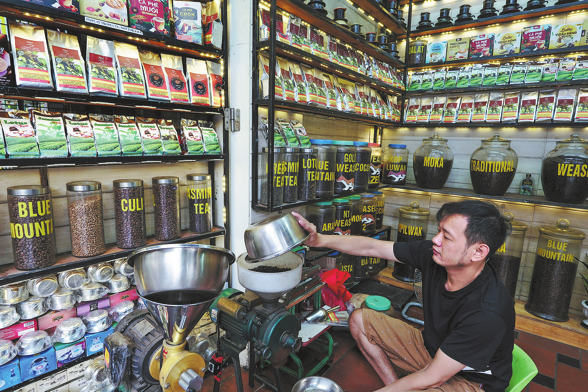China's absence felt as farmers reap harvest
Trade tensions force US growers to store more grain while selling at steep discounts

With harvest season underway across the US Midwest, corn and soybean farmers are confronting a grim reality: record yields may offer little financial relief as storage fills up and China remains absent from the market.
China, traditionally the top buyer of US soybeans, has not placed a single order for the 2025 harvest, which began in September. That freeze, driven by renewed trade tensions, is forcing farmers to store more grain while selling at steep discounts, deepening economic stress in the agriculture sector.
In Nebraska, growers are bringing in what could be a record crop. But instead of hauling soybeans and corn to market, many are diverting their harvest into storage bins. That's because local cash prices are significantly below break-even levels.
The US Department of Agriculture projects the national season-average corn price at about $3.90 per bushel. But Nebraska farmers are getting offers closer to $3.30, while soybeans are trading around $10.10 a bushel, both below production costs. According to the Nebraska Farmers Union, it costs about $4.80 to grow a bushel of corn and $11.80 for soybeans.
John Hansen, president of the Nebraska Farmers Union, told Nebraska Public Media that $3.30 per bushel is the same price he received when he first started selling corn in 1973.
In North Dakota, farmers who normally ship soybeans to ports in the Pacific Northwest for export to China have seen demand vanish.
"It creates quite a challenge here for farmers across the US because that market is important and it's been a reliable market, but right now in 2025, it's not happening," said Josh Gackle, chairman of the American Soybean Association, in an interview with DTN/Progressive Farmer.
"For most soybean farmers in North Dakota, you're looking at about a $100 to $150 loss per acre on every acre of soybeans planted," Gackle said, adding his own farm could see losses exceeding $400,000 this year.
Largest buyer
Gackle warned that other markets simply can't replace China. "We're always looking to find new markets, expand markets, but China just being the largest buyer of US soybeans, you can't replace that," he said. "That China market was built over 40 years. You can't replace it in a month or six weeks."
In 2024, the US exported nearly 985 million bushels of soybeans to China, accounting for more than half of total soybean exports that year. But a 20 percent retaliatory tariff and other duties have pushed the total tariff rate on US soybeans to 34 percent this year, according to an analysis published by Farmdoc Daily, a website of the University of Illinois.
As a result, US soybean exports to China from January through August this year totaled just 218 million bushels, 29 percent of total exports over that period. Shipments in June, July and August were effectively zero, the analysis said.
Meanwhile, the USDA estimates the US will harvest 4.3 billion bushels of soybeans this season, with few signs of where they will go.
A recent Farm Journal survey conducted for the National Corn Growers Association from late August to early September found that nearly half of 1,034 farmers surveyed believe the US is on the brink of a farm crisis. Some 65 percent said they are more concerned about their financial health than they were a year ago.
Nearly 60 percent of respondents said they would postpone equipment purchases in the coming year, while 38 percent said they planned to reduce fertilizer use.
According to the Farmdoc analysis, farm income is declining faster than at any point in recent history. The industry is experiencing the largest three-year drop in net cash receipts on record, driven by falling commodity prices and high input costs for seed, fertilizer and chemicals.
Some federal assistance may help, but analysts warn that payments will likely fall short of covering deepening financial losses. In the longer term, the uncertainty could discourage farmers from planting soybeans in 2026 or investing in upgrades needed to stay competitive.
If a trade deal is not reached this fall, soybean producers reliant on Chinese demand could suffer additional losses. Producers may be forced to store more grain than they can handle.
"We're going to produce more than we have storage capacity, and that's a challenge," said John Newton, executive head of Terrain, a team of industry-leading agriculture economists, in an appearance on the Agri-Pulse Newsmakers podcast. "If we're not selling them, where are they going to store those beans? That's the million-dollar question.
liazhu@chinadailyusa.com

































